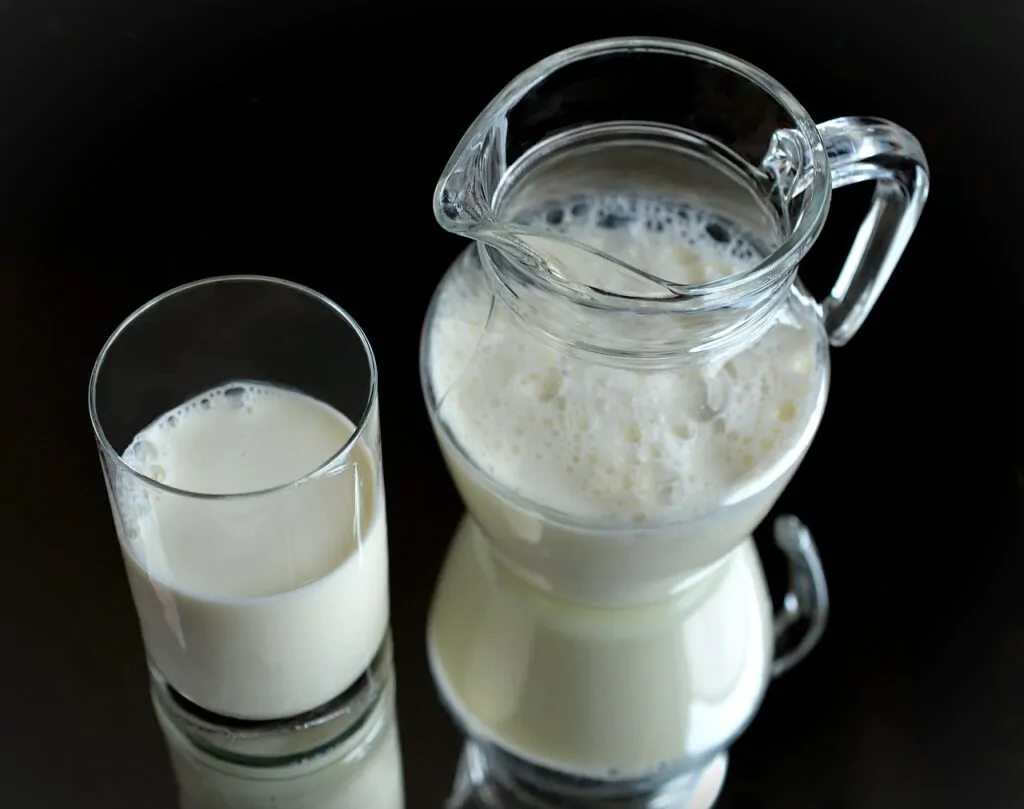If you’re wondering what milk to use for cappuccino at home, the key is to use whole, fresh, full-fat dairy. Learn why.

Many think it’s only possible to get a quality cappuccino from the coffee shop, but I’ve made great ones at home. The key involves the espresso shot and milk steamed and foamed correctly.
Cappuccino foam is thick and rich, and only full-fat milk will get that consistency. Whole milk gives the foam a velvet finish that pairs perfectly with buttery espresso shots. I use low-fat milk sometimes, but I can tell the difference in the foam.
Many confuse a latte with a cappuccino. Cappuccino is one-third espresso, one-third steamed milk, and one-third foam. So it’s important to use suitable milk to get the best-tasting drink.
Steaming Milk
Just as important as the type of milk used for cappuccino is how it’s steamed. Scalded milk has an almost sickly sweet taste, but it can curdle if it goes a second too long. It’s also important to never add fresh milk to steamed milk, or else bacteria will grow.
The good thing is that the type of milk you steam for one-third of the recipe isn’t as crucial as the foam. Steam milk until it’s between 150℉ and 155℉. Each type of milk has a different burning point, so I always watch the temperature. Various kinds of milk steam well, including:
You’ll want to aerate the milk even though you’re not using it for foam, or else you will hear a thunderous, unpleasant noise.
Please read our guide to steaming milk mistakes.
Frothing Milk

The foam is another story. When I use low-fat or plant-based milk to make cappuccino foam, it comes out with larger bubbles, and the consistency is lighter, not dense, and heavenly. It’s light and quickly dissolves in coffee, as plant-based milk doesn’t have the same ingredients as dairy milk.
Dairy milk has fat, protein, and sugar balanced with water. I’m able to steam and froth dairy milk to make cappuccinos so smooth that they taste better than my local coffee shop.
You might also be interested in our bone-dry cappuccino guide.
Types of Milk

There are many types of milk available, both dairy and plant-based. Dairy milk comes from cows, goats, sheep, and even buffalo.
Some people are allergic to milk that comes from mammals. Plant-based alternatives keep them healthy. Lactose-intolerant people shouldn’t put whole milk in their cappuccino. Sure, it gives your drink a rich taste, but it’s not worth the adverse reaction.
Almond milk is the best alternative to whole milk. It’s the creamiest plant-based milk and adds great flavor to the espresso shots. If you get the milk to room temperature, you can even froth it like whole milk.
Oat milk is another good choice in terms of the foam’s thickness. However, the milk doesn’t have high protein content. A low protein content means the foam fizzles away quickly. It gives the cappuccino a great nutty taste, though.
Soy milk is a popular choice that most coffee shops offer. It makes dense foam, but it’s hard to pour into the cappuccino. Since it’s so thick, it plops into the cup. I always make sure to give myself a splash zone when using soy milk.
Lactose-free milk doesn’t have the protein structure needed to hold bubbles, so it either won’t froth right or dissolves quickly. That doesn’t mean it’s not worth using! This type of milk still steams well and can make a delicious latte.
A good thing to remember is that different brands of milk also foam in unique ways. I’ve tried certain types of plant-based milk that don’t froth properly or offer varying results. So people who can’t handle whole-fat milk shouldn’t get discouraged. Try different milk and keep making cappuccinos at home until it turns out alright.
